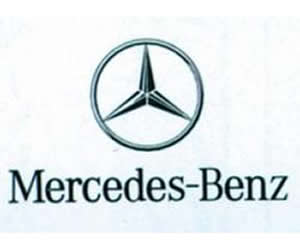
Owning a Mercedes vehicle puts you in with an elite category of owners who appreciate the engineering, quality, comfort, and fun-to-drivability that go with every “Benz” produced. With a history spanning well over one hundred years and a solid benchmark reputation to preserve, Mercedes continues to impress its loyal owners and attract interest from those who do not yet own a Mercedes.
Beyond ownership is the maintenance that is done to preserve your vehicle’s mojo. You know keeping your Mercedes well maintained can go a long way toward helping your car operate problem free as well as looking great. Trouble is, parts can get expensive...you’ll pay a premium if you have some garage or dealer do the work for you. Fortunately, you have some options – terrific ones at that – to find, procure, and install the high quality parts your Mercedes deserves without destroying your budget. Please keep reading for some helpful tips.
Owning a Mercedes is just like owning a piece of automotive history. It was back in the 1880s when two German craftsmen, Gottlieb Daimler and Karl Benz, began working on what became known as the first internal combustion engine. Soon thereafter the first “Daimler” vehicles were produced and were later renamed “Mercedes” due to legal conflicts with the Daimler name. Eventually, Daimler and rival automaker Benz merged to produce the Mercedes-Benz name that we know today. Yes, the parent company is now known as DaimlerChrysler but to Mercedes owners calling their cars a Mercedes-Benz is still common even though the Benz name isn’t typically ascribed to specific vehicles, especially in the U.S.
Beyond its history are the vehicles defining Mercedes, particularly those built in the last quarter of a century. In the important U.S. market, Mercedes has registered strong growth with new vehicle sales growth of more than 350% since 1993. An expanded product line and a desire by motorists to own and care for finer automobiles has been a big part of the Mercedes sales surge. New models, including an SUV and compact cars have fueled much of the growth as consumers flock from traditional American and European brands to Mercedes. Mercedes’ legendary quality is an important attraction as their line of diesel powered vehicles typically last for several hundred thousand miles. Indeed, it isn’t unheard of for diesel Mercedes owners to brag about their cars having passed the 500,000 mile mark.
Mercedes attributes much of their success to the design and craftsmanship put into every car. The company is very careful whom they choose to produce OEM parts relying on trusted names such as Bosch, Hengst, Mann, ACM, Conti, and others to outfit their vehicles. Expensive parts, mind you, but well worth it...you drive a Mercedes!
Of course, if you are like many Mercedes aficionados who enjoy working on their own vehicles, you are in good company. In times past, buying OEM parts meant an expensive trip to your dealer’s parts department or a disappointing visit to your local parts store. Disappointing, as you soon discovered that the only German parts available were for Volkswagens.
Today, your choices have expanded immensely due to the rise of online auto wholesalers such as the Auto Parts Warehouse, who specialize in carrying Mercedes Benz parts. Consumers today are turning on their computers, surfing the ‘net, and finding suppliers who have the parts they need and can ship these parts directly to them. With no middle man mark ups, many of the quality wholesalers are able to supply Mercedes Benz parts at prices well below the prevailing retail rates.
Yes, you have a truly fine and capable vehicle in your Mercedes. You can keep your “Benz” running great and looking its best with genuine OEM parts. Shop around and head down the road to real savings today!





.jpg)
